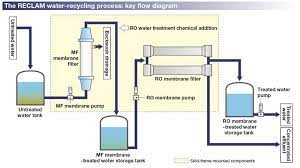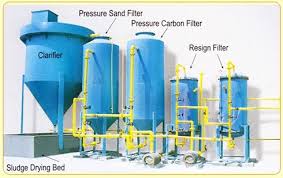Industrial Wastewater Treatment Procedure
Many industrial processes produce wastewaters. These are waters that have been contaminated in some way by anthropogenic industrial or commercial activities.
Sources of Industrial Wastewaters
The main sources of industrial wastewaters include: Food industry, water treatment plant, agricultural waste, iron and steel industry, mines and quarries, nuclear industry as well as chemical industries.
Industrial Wastewater Treatment

Industrial wastewaters are treated to obtain good quality water for demanding purposes. Treatment of industrial wastewater involves:
Removal of solids– This involves processes such as sedimentation, filtration, flocculation as well as the use of alum salts.
Removal of oils and grease– This involves recovering of the oils from water surfaces by skimming devices.
Removal of biodegradable organic matter– Biodegradable organic material can be treated using activated sludge or trickling filter. These are biochemical processes of treating industrial wastewater.
The activated sludge method uses oxygen and microorganisms to oxidize the organic material thereby producing a waste sludge which contains the oxidized material.
The activated sludge process requires aeration and settling tanks. The aeration tank is where air is injected and properly mixed into the wastewater. The settling tank is to allow the waste sludge to settle.
The trickling filter process of removing biodegradable organic material involves adsorption of the organic materials by microbial slime layer, diffusion of air into the slime layer to provide the oxygen required for the oxidation of the organic material.
Treatment of other organic materials– Industrial wastewaters are also treated for other synthetic organic materials such as pesticides, pharmaceutical products, paints, solvents, cooking products, etc. The treatment that is carried out will depend on the type of organic material being treated.
Treatment of acids and alkalis – Acids and alkalis in wastewaters are treated by neutralization. Further treatment is usually needed after the neutralization to remove toxic residues produced.
Treatment of toxic materials – Toxic materials in industrial wastewaters are difficult to treat because they are generally resistant to biological processes. Toxic materials such as metals can be treated by precipitation.
This can be achieved by changing the pH or by using other chemicals to form precipitates with the metals. Other toxic dissolved materials can be removed by incineration. Others may require concentration follow by landfilling or recycling.
In conclusion, most industrial activities produce contaminated wastewaters. There are different ways of treating the industrial wastewaters.



